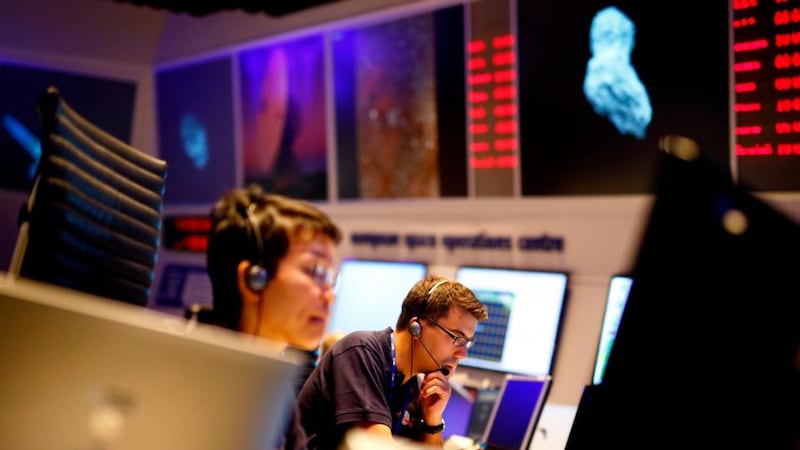Comet-chasing space probe Rosetta has reached its destination after a journey lasting more than a decade.
Scientists and spectators at the European Space Agency's (ESA) mission control in Darmstadt, Germany, cheered today after the spacecraft successfully completed its final thrust to swing alongside comet 67P/Churyumov-Gerasimenko.
ESA chief Jean-Jacques Dordain said the probe’s rendezvous with 67P is an important milestone in Rosetta’s life.

The goal of the mission is to orbit 67P from a distance of about 96km and observe the giant ball of dust and ice as it hurtles toward the sun.
If all goes according to plan, Rosetta will drop the first ever lander, Philae, onto the comet in November.
Scientists hope this will help them learn more about the origins of comets, stars and planets.
The European spacecraft reached the icy comet more than 402 million km away at the end of an epic 10-year journey across the Solar System.
Launched in March 2004, Rosetta’s odyssey has taken it 6.4 billion km across the asteroid belt and more than five times the Earth’s distance from the Sun.
Comet 67P/Churyumov-Gerasimenko is a misshapen lump of ice and dust swinging in a wide circuit round the Sun at around 55,000 kmh
Philae will steer itself onto the comet’s surface before sending back images and data on the object’s composition.
Together, Rosetta and Philae’s suites of instruments will conduct the most detailed analysis of a comet that has ever been attempted.
Over the next two weeks it will remain the same distance from the comet, before edging closer until it settles just 30 km above the surface.
A primary initial goal will be to search for a suitable landing site for Philae, using Rosetta’s Osiris (Optical, Spectroscopic, and Infrared Remote Imaging System) twin cameras.
The landing site has to be as free as possible of holes, stones and craters. Sites where jets of gas erupt from the comet’s interior will also have to be avoided, despite Philae being anchored down by harpoons and ice screws.
For the next 17 months Rosetta, a box-like structure just under 3m long with two wing-like solar panels, will remain close to the comet as it heads towards the Sun and heats up, throwing out increasing amounts of gas and dust.
During its journey through space the probe looped around the Sun five times and picked up speed from three “gravity-assist” swing-bys of Earth and one of Mars.
To conserve power, it spent more than two years in “hibernation” with most of its systems shut down.
British scientists and engineers developed a mini-laboratory for Philae which will analyse grain samples from the comet and answer key questions about its origins.
Professor Richard Holdaway, director of RAL Space at the Rutherford Appleton Laboratory in Oxford, said: "This is an historic and hugely exciting moment for the Rosetta Mission. After 10 years of travel through space from Earth, Rosetta finally arrives at the comet and will land a unique shoe-box sized chemistry set designed and built by RAL Space and The Open University.
“We are very proud of our involvement and eagerly anticipate receiving the first results.”
Information from the mission is expected to help scientists understand the origin of comets, the Solar System, and possibly life.
Comets are known to contain complex organic molecules rich in carbon, hydrogen, oxygen and nitrogen - the basic elements that make up the essential ingredients for life, nucleic and amino acids. Many scientists believe comets may have helped to plant seeds of life on Earth.
Rosetta is named after the Rosetta Stone, a slab of basalt containing inscriptions that helped archaeologists decipher ancient Egyptian hieroglyphs.
The lander Philae is named after an island in the Nile where an inscribed obelisk was discovered in 1815. Comparing the hieroglyphs on the Rosetta Stone and Philae obelisk led to greater understanding of the ancient Egyptian writing system.
PA










